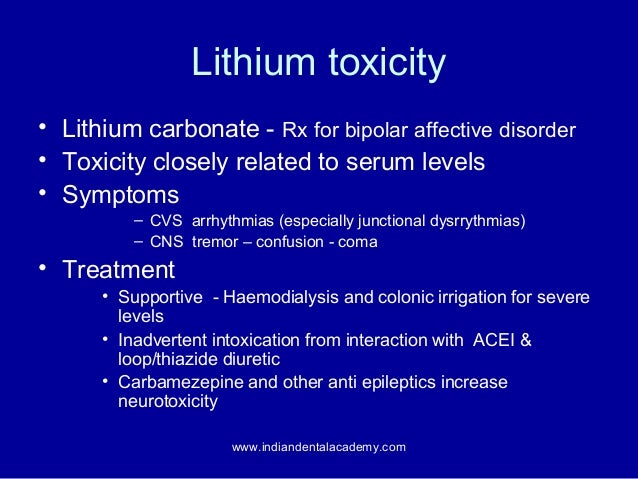

That said, exceeding these doses can result in lithium toxicity or overdose.

Higher doses may be needed in some cases. Our case demonstrates that patients who develop a new Mobitz I atrioventricular block of unclear etiology in the setting of acute ingestion should be screened for lithium exposure, even if otherwise free of more typical manifestations of lithium toxicity.Ĭardiotoxicity EKG Lithium Mobitz type I Wenckebach.The optimal dose of lithium can vary widely but typically ranges from 900 milligrams (mg) to 1,200 mg per day. The patient was medically cleared after 36 h of monitoring and discharged after psychiatric evaluation.

Cardiology recommendations included ambulatory Holter monitoring upon discharge and follow-up in clinic within two weeks. Repeat 12-lead ECG obtained 20 h post-ingestion showed normal sinus rhythm. During her admission, the patient remained hemodynamically stable and asymptomatic despite occasional episodes of Mobitz I, lasting seconds to minutes. Repeat lithium concertation 14 h post-ingestion was undetectable. The patient was treated with intravenous hydration at twice maintenance rate. Serum lithium concentrations was 1.7 mEq/L (0.6-1.2 mEq/L therapeutic range). Serum digoxin concentration was undetectable. Serum dioxin and lithium concentrations were subsequently requested. Medical toxicology was consulted at that time given concern for potential cardiotoxicity from an unknown xenobiotic. No prior ECGs were available for comparison. During her ED course she showed evidence of Mobitz I (Wenckebach) on 12-lead ECG.

4 h post-ingestion acetaminophen concentration was 28 mcg/ml and below indication for n-acetylcysteine antidote therapy. On serological examination complete blood count, chemistries panel, and liver function tests did not show significant derangements. On physical examination the patient had reassuring vital signs, was in no acute distress,cardiopulmonary examination was normal, had clear sensorium, and no evidence of a toxidrome. Parents reported that the patient had visited her grandmother, who "regularly took many different kinds of medications," earlier that same evening. The patient had no significant past medical history and presented to the emergency department 1 h after intentional overdose of 10 tablets of unknown drug. We present a case of a 13-year-old female with acute lithium overdose whodeveloped Mobitz I, a manifestation of lithium associated cardiotoxity not previously reported. The most commonly observed cardiac effects include QT prolongation, Twave abnormalities, and to lesser extent SA node dysfunction and ventricular arrythmias. Lithium induced cardiotoxicity is associated with several electrocardiographic (ECG) findings.


 0 kommentar(er)
0 kommentar(er)
